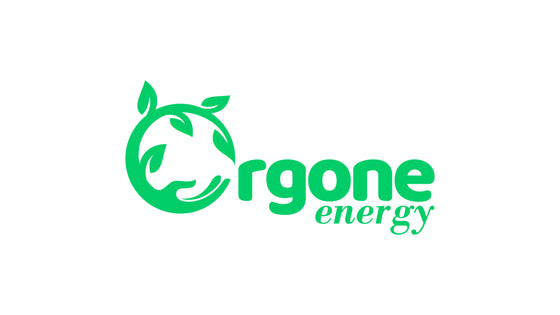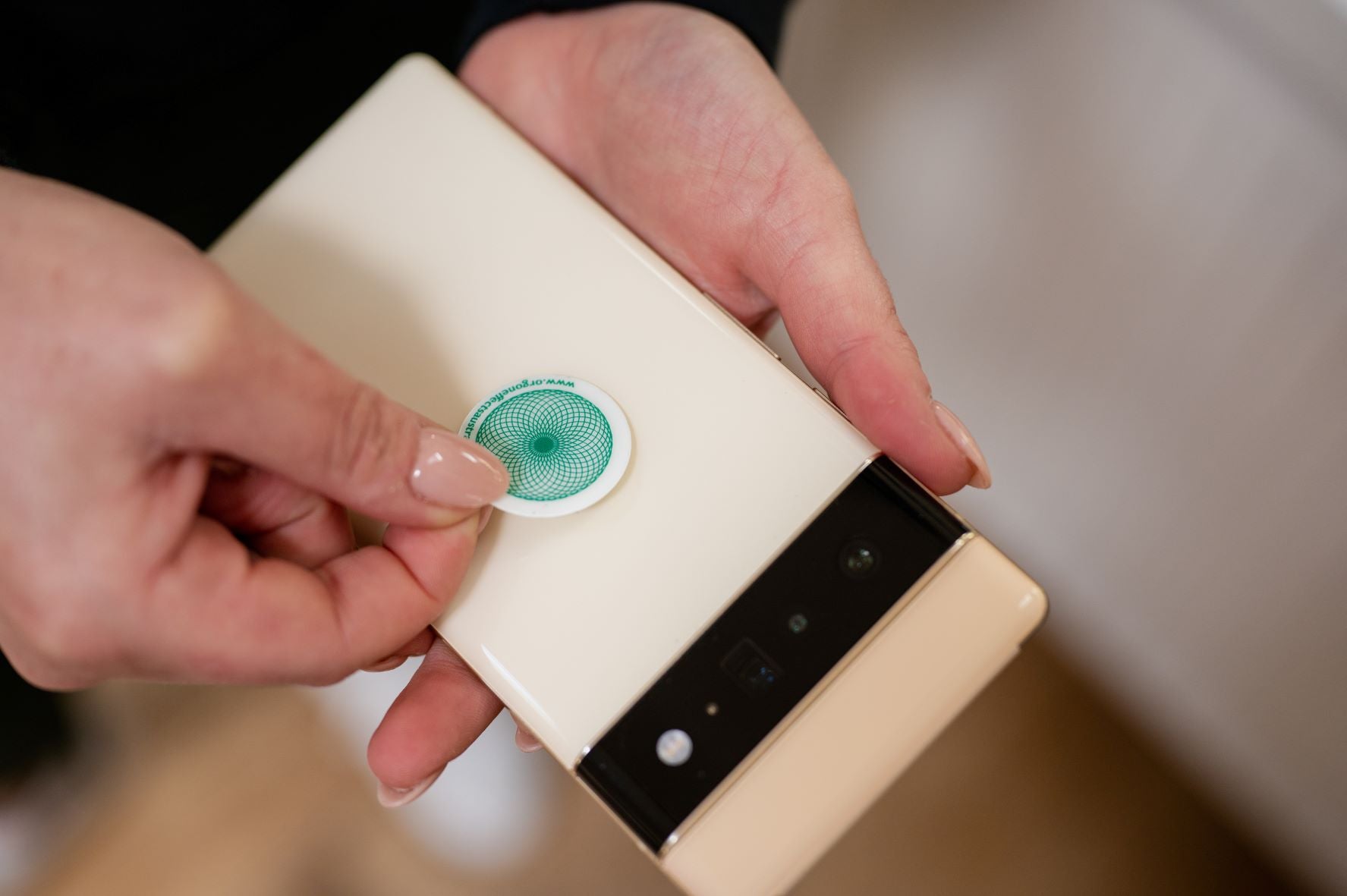Tesla (T) is the standard unit of magnetic field strength. The Tesla is a very large unit, so the measured magnetic fields are sometimes only a few millionths of a Tesla, known as microtesla (µT). An older, non-standard unit of the magnetic field is the Gauss (G). 10,000 Gauss is equal to 1 Tesla.

We literally live with electromagnetic fields, most obviously those generated by our nervous system. As a result, we are all potentially sensitive to magnetic fields, which create electrical currents as they change or move through them. The intense fields used by medical scanners, which are about 100,000 times more powerful than the Earth’s magnetic field, can cause dizziness, nausea, and a metallic taste in the mouth. Some experts are worried about the potential harmful effects of magnetic fields, so it is important to know how many microteslas are safe.

via GIPHY
Before we go any further into this article, it is important to quickly mention that if you are worried about magnetic fields from things like household appliances, power lines, electrical cables, and other magnetic fields in a typical home, there are EMF protection products that you can use to protect you and your loved ones.
How Many Microteslas are Safe in Typical Homes?
In houses that are not in the vicinity of power lines, the magnetic field in the total volume of the house can range from 0.01 microtesla to 0.2 microteslas. Usually, this comes from the wiring along the street that powers the house. This is an average. The type of house we live in can determine the number of fields we are exposed to. It doesn’t just matter where you live. As you move around, you will encounter fields from many other sources, including devices, as well as background fields around your home. This means your exposure will be higher than the background field at home.

How Many Microteslas are Safe from Household Appliances?
Devices powered by the power grid generate high magnetic fields with every power consumption. Generally, such fields drop as the reciprocal of the cubic meter of distance and are therefore only significant within a meter or two of the device. Although the maximum field can be high (some electric shavers produce more than 1000 µT on their surface), people generally do not spend much time near appliances, so the appliance’s contribution to average exposure over time is limited. In typical households, people likely get about a third of their exposure through the devices and the rest of the network goes into the distribution system.
Which Appliances Generate the Highest Fields?
The highest fields tend to come from some of the smaller appliances, such as the doorbell transformer. This is because transformers or motors designed for lightweight devices sometimes have a minimum of iron in their magnetic circuit, which allows more of the magnetic field to escape. Near the surface, the fields can be, for example, 2000 µT for hairdryers and electric shavers, 800 µT for vacuum cleaners, and 50 µT for washing machines and televisions. This means that larger or more powerful appliances do not generate higher fields.

How Many Microteslas are Safe from Overhead Lines?
The electricity flowing through overhead lines creates a magnetic field that reaches everyone who lives nearby. But as with all magnetic fields, the field strength decreases as you move away from the source. The official safety limit for overhead line fields is 100 µT. In comparison, a large overhead line 30 meters from a house could produce a field of about 0.4 µT. The strength of the natural magnetic field of the earth ranges from 30 µT to 60 µT.
Generally, the most powerful magnetic fields are emitted by high voltage power lines, the power lines on top of tall and big metal towers. To ensure you reduce your exposure to 0.05 µT or less, a safety distance of 200 meters may be required. It can be much less, but often more. To be sure, you need to test with a gaussmeter. It is even more difficult to provide a safe distance from neighborhood power distribution lines, the kind usually found on wooden poles. For instance, houses with a nearby transformer often have higher electromagnetic fields because the transformer is a hub and transmission lines carry more electricity for a group of houses. Compounding the problem, eddy current can flow through metal water supply pipes in the neighborhood, increasing magnetic fields from power lines and underground pipes.

Therefore, there is no reliable safe distance for neighboring overhead lines. Typically, a 0.5 mG magnetic field will be achieved between 3 and 60 meters from the cables. But you can’t tell just by looking at the transmission lines. To be sure, you should test on-site with a gaussmeter. If power lines are buried, the magnetic fields can be just as strong, if not stronger. This is because overhead lines could actually be closer to you if they were buried a few meters instead of 6 or 9 meters overhead. In neighborhoods with buried power lines, you should always test with a gaussmeter.
Also, keep in mind that the strength of magnetic fields from transmission lines can vary widely depending on the time of day and even the time of year. The strongest measurements are, for example, often in the late afternoon on hot summer days, when air conditioning is the source of spikes in electricity consumption. Therefore, it is important to take several measurements at different times of the day to get a solid overview of the magnetic field strengths.
Also, power lines give off electric fields. Electric fields from high voltage power lines (metal towers) can be very strong outdoors near cables and can extend up to 300 meters. However, inside the house, the building structure, and even nearby trees, generally provide some protection, and the electric fields from power lines and cables inside the building are generally much stronger than those from the power lines of the building.
How Do Overhead Lines Generate Fields?
The magnetic field generated by an electrical current in a conductor decreases with distance from the conductor. If more than one electrical current is part of one or more electrical circuits, there will also be partial cancellation between the magnetic fields generated by the individual currents, and this cancellation will generally be better at greater distances.

In general, the magnetic field is greatest at the closest approach point to the conductors and decreases quite rapidly with distance. Also, there is a partial cancellation between the electric fields created by the voltages in the individual conductors, and the electric field is generally highest at the closest approach point to the conductors and decreases very rapidly with distance. As a result, overhead lines create a magnetic field that peaks under the conductors and decreases rapidly with distance to both sides.
Why Should I be Concerned?
Over the past 40 years, magnetic fields, sometimes generated by the electrical system, have been shown to cause disease, primarily leukemia in children. For this, the evidence comes from epidemiological studies (the study of disease statistics) that have found a statistical link: an apparent doubling in the incidence of leukemia from around one in 24,000 a year to one in 12,000 per year, for children with half the top percent of exposures. The evidence is strong enough that the World Health Organization classifies magnetic fields as “potentially carcinogenic”.
Researchers have identified health effects, including doubling of leukemia rates linked with living in alternating magnetic fields greater than 0.4 µT (4 mG). The Swedish Ministry of Energy has issued a warning that kindergartens, playgrounds, and schools should not be located near power lines and that children shouldn’t be exposed to alternating magnetic fields greater than 0.3 µT (3mG) for prolonged periods every day.
The Institute of Building Biology recommends a maximum exposure of 0.1 µT (1 mG) to alternating magnetic fields for bedrooms. A scientific committee also recommended an exposure limit of 0.1 µT based on the risk of leukemia, Alzheimer’s, brain tumors, ALS, DNA strand breaks, and sperm damage. These recommendations apply to long-term exposure over several hours and days, not short-term exposures, such as driving under transmission lines.
The primary sources of prolonged exposure to strong AC magnetic fields include power lines, poorly wired homes, and nearby wiring and appliances. In many households, exposure can be reduced by providing beds, work, and play areas with AC fields of less than 0.1 µT.
Why Are We Interested In Magnetic Fields Larger Than 0.4 Microtesla?
Statistical associations from epidemiological studies appear to occur in fields larger than 0.4 µT. (Sometimes we speak of 0.2 µT.) Several epidemiological studies of childhood leukemia and magnetic fields have used a field of 0.4 µT as the cut-off point in the analysis to define the group with the highest exposure. The UK Childhood Cancer Study (UKCCS) and Ahlbom’s pooled analysis both used > 0.4 µT as the primary exposure category, and Ahlbom’s pooled analysis found that only this primary category had a statistically significant association. For this reason, there is great interest in households with fields larger than 0.4 µT.

Which Area Are We Interested In Exactly?
Epidemiological studies have measured the background field at home (often in the children’s room). In other words, they deliberately measured the field away from household appliances. Fields of more than 0.4 µT are easy to find in the vicinity of electrical devices. We are interested in households in which the field is greater than 0.4 µT even far from electrical devices.
Also, they measured the field for 24 hours or more (sometimes 48 hours). Over time, the fields vary. The field can briefly exceed 0.4 µT in many households. We are only interested in households with a 24-hour mean value greater than 0.4 µT. After all, they measure the field at home. Of course, we know that people spend time outdoors and are exposed to fields, but it is difficult to measure and we sometimes use the field at home as an indicator of total exposure. When people say “0.4 µT” they are typically referring to the field at home.
What is the Typical AC Magnetic Field Level in a House?
In a home, it is typically around 0.2-1.0 mG when not near wiring or appliances. The levels in condos and apartments are a bit higher. Play areas and beds can be sited where fields are low, for instance, below 1.0 mG.
How to Measure Alternating Magnetic Fields in the House?
You can use an AC gaussmeter like the Bell-4180 Gaussmeter. It’s accurate and easy to use - just press the ON button, wait ten seconds for it to start, then read the magnetic field strength displayed on the screen. Instructions for use are included with the measuring device.

Why Do We Recommend Tri-axial Gaussmeters?
For checking alternating magnetic fields, tri-axial Gaussmeters are much faster, easier to use, and therefore enable more precise measurements. Uni-axial Gaussmeters must be rotated in multiple directions, which is slow and sometimes reduces accuracy because they do not rotate in the best orientation.
Official Limit Values for Exposure to Alternating Magnetic Fields
The United States has no legal limits for exposure to 60 Hz magnetic fields. However, two US states limit public exposure near overhead lines to 20 µT (New York) and 15 µT (Florida). The ICNIRP standards allow public exposure of 83 µT.
Why Do Some Places In A House Measure Higher Levels Of Alternating Magnetic Fields?
Due to the presence of devices or cables nearby in the walls or on the floor, readings may vary depending on the devices used and the location being tested. Some devices that emit high magnetic fields can be removed from your sleeping area. In the vicinity of the switchboard and the “drop line” it usually shows particularly high fields, since there, electricity flows through the whole house. The “drop line” is the thick wire that carries electricity from the street to the electricity meter and is often found on a wall in front of the house. Magnetic fields penetrate walls, so a pillow or bed can be exposed to high fields a few meters from the fall line. Beds and places where people spend most of their time could be moved to places where the fields are lower. Other electrical cables in floors or walls that carry large currents can also generate strong magnetic fields, particularly in large buildings such as apartment buildings, bedrooms, and offices. Circuit breakers (fuse boxes), transformer boxes, and electricity meters also generate high fields that can penetrate walls.

How Can You Reduce Exposure to AC Magnetic Fields?
One of the most realistic options that can help reduce AC magnetic fields at 60 Hz include correcting wiring errors (if that is the problem), choosing places with weaker fields to spend a lot of time (pillows, beds, play & work areas, etc.), switching off or moving appliances that have been exposed to strong fields for long periods, switch off lights and equipment at night or, in extreme cases, turn off some fuses at night. Other options include the following:
Use an Orgone Bamboo Blanket
If you're looking for a budget-friendly way to protect yourself and your family from the harmful effects of radiation, the Orgone Bamboo Blanket is your best option. This blanket is made of materials that can protect against radiation from electromagnetic fields. It has been shown to reduce the number of electromagnetic fields in the room by a small percentage. Also, investing in the Orgone Bamboo Blanket is a smart move, especially if you are on the go. This blanket can protect you not only while sleeping at home but can also protect you from all types of radiation wherever you sleep.
These eco-friendly Orgone Bamboo Blankets are imbued with octaves of frequency that create and bring to life strong negative ionic resonance which is used for energy healing or orgone therapy, making them the best natural sleeping pills for the body.

This amazing resonance is the healing component that extends for about 10 meters of these very powerful and incredibly relaxing blankets. The Orgone Bamboo Blanket is easy to pack and take with you, whether you are camping or on a business trip to a convention.
Dome Schumann Resonance Orgone Generator
Another way to reduce EMF radiation from magnetic fields is to use an EMF shielding device such as the Dome Schumann Orgone Generator. These powerful Orgone accumulators neutralize and harmonize the electrical wiring in your walls and dangerous smart meters. This makes it an ideal energy balance for any electromagnetic field in any room. Orgone generator domes increase the vibrational healing energy of magnetic grids and fault zones to a vital state, reducing physical stress and psychological problems where magnetic fields are present.

Geoclense Orgone Negative Ion Generator
The GeoClense is another EMF protection device that provides protection against EMF radiation from control panels. The Geoclense Orgone Negative Ion Generator continuously creates healthy and beneficial negative ions that work by harmoniously neutralizing harmful “dirty electricity” from highly harmful electrical switchboards and smart meters, thwarting any of these destructive energies such as radiation and electromagnetic frequencies.





